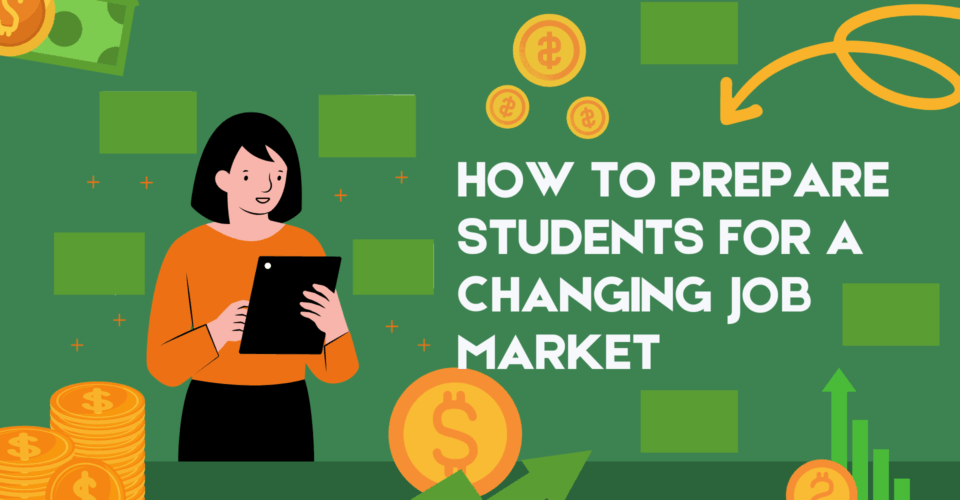With the fall semester reaching its midpoint and a new academic year in full swing, students are settling into routines on campus—but for many recent graduates, the season brings a different reality.
They’re still grappling with the aftershocks of one of the toughest labor markets in decades, finding it harder than ever to land that crucial first job—a challenge rooted in shifting workforce expectations and evolving definitions of “career readiness.”
For employers, a degree alone is no longer enough. They want evidence of real-world experience. In fact, four in five employers say they’re more likely to hire recent graduates who have completed an active or applied learning opportunity during college.
Students also recognize the value of work-based learning, with more than 70% citing “gaining skills to succeed in the workplace” as a critical factor in their decision to pursue higher education. Work-based learning is now widely recognized as a crucial component in preparing students for success after graduation.
But you might not realize this consensus exists just by listening to the conversations surrounding the topic. Instead, you’ll hear terms like work-integrated learning, experiential learning, apprenticeships, internships, project-based learning, simulated learning and embedded experiences—the list goes on.
If you’re confused, you’re not alone. As states, institutions and employers invest in a flurry of new models to close the education-to-career gap, higher education and workforce leaders need a shared understanding of this essential bridge between education and employment. Here’s a guide.
Definitions won’t move the needle
For centuries, people have acquired skills through hands-on experience in trades such as agriculture, medicine and construction. In early America, apprenticeships were common, often pairing young people with skilled mentors in exchange for labor and training.
A more formalized version of work-based learning gained federal support over a century ago with the Smith-Hughes Act of 1917, which funded vocational education in public schools.
In recent years, colleges have recognized that these kinds of experiences are just as critical in degree programs as they are in the trades. Today, institutions are expanding hands-on learning opportunities, policymakers are investing in new career pathways, and employers are stepping up as partners in developing talent.
Yet for all this momentum, the field still struggles with a foundational question: What, exactly, is work-based learning?
Or, put another way: What does it really mean to prepare students for the world of work? The U.S. Department of Education defines work-based learning as “an instructional strategy that enhances classroom learning by connecting it to the workplace.”
The Association for Experiential Education, meanwhile, emphasizes learning through doing. The American Association of Colleges and Universities includes internships, service learning and collaborative projects among its widely cited “high-impact practices” that enhance student engagement and learning.
But definitions alone won’t move the needle. As the demand for career-relevant education and training grows, institutions and workforce programs need clearer distinctions among the many models under the work-based learning umbrella. And they need a better understanding of the outcomes they’re designed to deliver.
2 work-based learning models
Work-based learning takes many forms. Apprenticeships and co-ops provide long-term, immersive experiences that often lead directly to employment opportunities. Internships, meanwhile, provide valuable exposure to professional settings and help build career connections.
But these opportunities vary widely in quality, compensation and accessibility. While about three-quarters of first-year students in the U.S. expect to complete an internship before graduation, fewer than half do so by the time they reach their senior year.
New approaches are emerging that address some of those barriers by bringing work-based experiences directly to learners. Co-curricular models and short-term micro-internships are making it easier for learners to gain meaningful experience without needing to commit to a full-time internship or relocate.
Some paid micro-internships are supported through government incentives, philanthropic funding or corporate social responsibility budgets, while in other cases, employers are choosing to directly fund stipends themselves.
Course-embedded models, meanwhile, are connecting students with short-term, employer-sponsored projects that are integrated into their academic coursework. These experiences allow students to tackle real business challenges, often with mentorship and feedback from industry professionals, without leaving campus.
Embedded, project-based learning can serve as a low-barrier entry point to the world of work, especially for students who can’t afford unpaid internships or relocate for a summer co-op.
Some institutions are building these opportunities into the core of the student experience. At Royal Roads University in Canada, for example, students complete 12 project-based experiences before graduation, earning academic credit and progressing toward a professional consulting credential in the process.
In the U.S., Calbright College, California’s fully online community college for working adults, recently launched its Career Bridge Program, which pairs students with paid, project-based micro internships. Calbright College connects learners with real-world employer projects in high-growth fields like cybersecurity and data analytics, helping them build experience and professional networks without leaving their communities.
It’s all about applying knowledge
Work-based learning isn’t a single program or practice. It’s a broad category encompassing any structured opportunity for students to apply their knowledge in professional settings, sharpen their skills through practice and build the confidence to succeed in their careers.
Every student should have access to high-quality work-based learning experiences before they graduate. And every institution should be equipped to provide those experiences.
The question isn’t whether students need real-world work experience, nor is it what those experiences should be called. It’s how higher education leaders and policymakers ensure students receive them.



